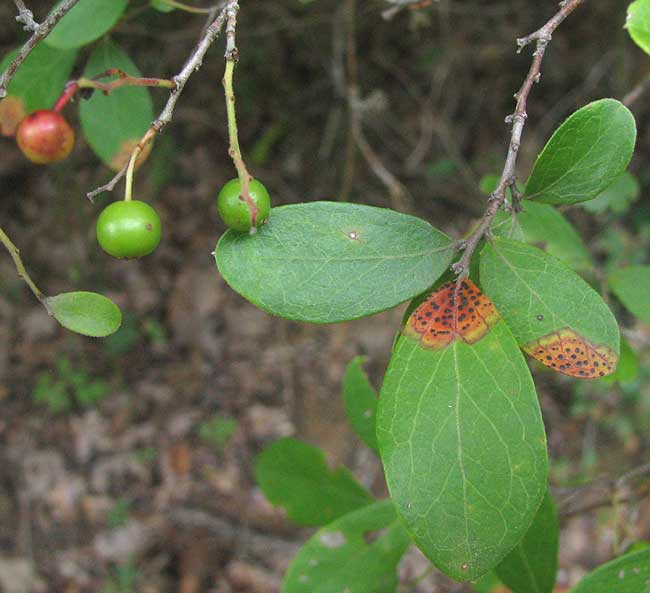Excerpts from Jim Conrad's
Naturalist Newsletter

from the the August 12, 2012 Newsletter issued from the woods of the Loess Hill Region a few miles east of Natchez, Mississippi, USA
SPARKLEBERRY/ FARKLEBERRY FRUITS TURNING
Along the dry, scrubby crest of a loess ridge a small tree's crabapple-like fruits were turning purple, later to be black, as shown above. That's a member of the genus Vaccinium, which means that it's actually a kind of blueberry. When the blueberries in the picture ripen they'll be edible but so bitter and tough that unless you're hungry you should just leave them for the birds, who love them.
You know that blueberries are produced on shrubs, often knee-high ones, but our ridgetop tree was about 12 feet tall (3.5m). That's OK, since this is VACCINIUM ARBOREUM, the "arboreum" pointing to its unusual arborescence, or "treeness." Books are about evenly divided as to whether the English name is Sparkleberry or Farkleberry. The literature seems to be silent as to why either name is appropriate.
Vaccinium arboreum is centered in the southeastern US but it's found as far north along the coast as Massachusetts and inland to Ontario and Kansas.
By the way, many of this tree's leaves were infected with the fungus forming the conspicuous orange-yellow splotches with black dots on two leaves in the picture. I'm guessing that that's caused by the fungus Ophiodothella vaccinii, which is known to infect Vaccinium arboreum. The black dots are the fungus's blister-like fruiting structures, technically called conidiomata. Inside them, the fungus's hyphae vegetatively (asexually) form reproductive spores that escape from an opening in each blister's center.